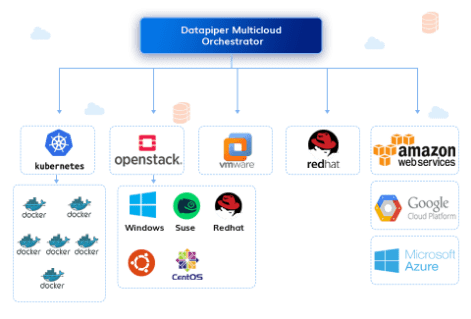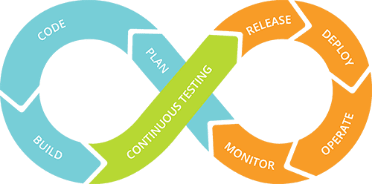Certified Specialists
Data Piper has a dedicated team of certified DevOps automation specialists who can develop a streamlined solution to smoothen your DevOps.
Key Features
Certified Specialists
Data Piper has a dedicated team of certified DevOps automation specialists who can develop a streamlined solution to smoothen your DevOps.
Cloud Cost Management Tool
Data Piper integrates state-of-the-art solutions designed to reduce cloud operation and maintenance costs.
DevOps Assessment Methodology
Data Piper integrates unique assessment methodologies designed to understand the infrastructure and business operations for better outcomes.
Offerings
Infrastructure as a Code
Our Infrastructure Automation Engineers can help you:




Infrastructure as a Code
Cloud Orchestration
Automate scaling to make your systems adapt to the ramp-up / down of servers as needed, depending on load requirements.









Cloud Orchestration
CI & CD
Streamline the patch process and ability to move artifacts to different environments using automation seamlessly.









CI & CD
Containerization
Data Piper helps to containerize applications in a scalable environment, as the most promising digital technology it simplifies traditional applications’ packaging and deployment.

Containerization
Continuous Testing
We help you retain agility of your DevOps application development, through continuous testing, we elongate their lifecycles so you are at the core of digital technological transformation.

Continuous Testing
Featured Case study
How a GCP client migrated to the Cloud with Data Piper innovative methods

Industry
Information Tech
Solution
Data Piper
Challenge
Founded in 2009, the GCP Client was developed as an electronics and fitness company. It’s production range includes activity trackers, smart watches, wearable wireless-enabled technology devices that measure number of steps walked, heart rate, quality of sleep, steps climbed and other personal fitness metrics.
The GCP Client, now having foundational infrastructure in Cloud; sought expertise in migrating their suite of applications ( user-facing, analytical and job processing) and their persistent data stores into GCP while causing minimal interruption to their 30 million active users. Additionally, the business also wanted to continue delivering features and deployments on both the soon-to-be legacy infrastructure and the next-generation across both softlayer and Cloud platform. Within the suite of applications, user data is persisted (mostly) within a sharded MySQL data store. A cache (memcached) is used to optimize retrieval and manipulation (cas + delete) of this data so that the MySQL cluster is available within a reasonable response time.
How a GCP client migrated to the Cloud with Data Piper innovative methods

Industry
Information Tech
Solution
Data Piper
Solution
Two migration approaches were considered. A progressive migration versus a big bang migration. Pros and cons were weighed against each, where big bang was expected to involve major user disruption and significant risk. Progressive migration, where risk was less but technical work and complexity were greater. It was found that with a Memcached proxy, such as Mcrouter, cache operations could be replicated across two different cache clusters. With this possibility, cache “eventual consistency” was now a real possibility and feasible to use for the progressive migration strategy.
Result
Implementing Mcrouter as sidecar in aurora/mesos on GCP also gave new visibility that was not easily rendered by the cache in soft layer. We were now able to see, per application tier what the characteristics of cache operation looked like. The delta between tiers, the resource usage, the different types of operations, the average latency, and more. Ultimately the drop-in of a Memcached proxy Mcrouter not only allowed the progressive migration, allowed visibility into the different services of the monolith and their interactions with the cache, and lastly offloaded Memcached configuration away from the client and into Mcrouter allowing operational flexibility.